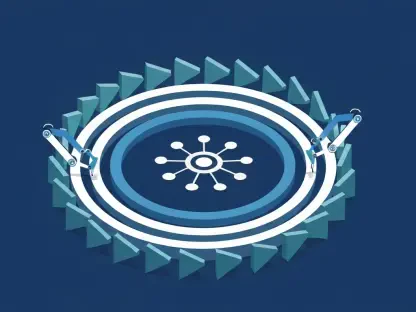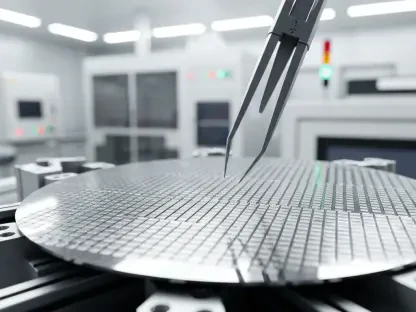The data center industry is experiencing a remarkable transformation as Arm’s Neoverse platform gains dominance over the traditionally used x86 architecture. This shift, strongly driven by the platform’s power efficiency and scalability, is being widely adopted by major hyperscalers such as AWS, Google Cloud, and Microsoft Azure. With nearly 50 percent of compute delivered to leading hyperscalers now based on Arm, the demand for energy-efficient designs has become even more critical in managing the escalating AI workloads.
Market Context and Forecast
Hyperscalers’ Adoption
A considerable number of hyperscalers have embraced Arm’s Neoverse platform, propelled by its superior power efficiency. This advantage is essential for managing the increasingly intense AI workloads common in modern data centers. Companies like AWS, Google Cloud, and Microsoft Azure have rapidly integrated Arm-based infrastructure, leveraging its capabilities to reduce operational costs and enhance performance simultaneously. This widespread adoption underscores the significant market shift from x86 to Arm’s architecture.
AI Workload Demands
The rapid growth of AI significantly impacts market trends, with data centers requiring more robust and energy-efficient processors. Arm’s Neoverse architecture is well-suited to these demands, offering scalable solutions capable of handling the complex nature of modern AI tasks. This positioning aligns Arm as the preferred provider for hyperscalers looking to optimize infrastructure and meet rising performance and efficiency standards.
Detailed Analysis of Trends and Predictions
Custom Silicon Development
One of Arm’s distinct advantages is its architectural flexibility, which enables partners to develop bespoke silicon solutions tailored to AI workloads. Nvidia, for example, has utilized Arm’s Neoverse CPUs in its Grace Blackwell superchip, achieving unparalleled AI performance with high-bandwidth and coherent mesh networks. This trend clearly indicates that custom silicon development will be a future market staple, driven by the need for specialized and high-performance AI solutions.
Market Dynamics and SoftBank’s Role
In addition to the rise in custom silicon developments, market dynamics have shifted due to SoftBank’s acquisition of Ampere, an Arm-based chipmaker, for $6.5 billion. This acquisition has sparked speculation that Arm might venture into direct chip production. Entering this market could potentially position Arm as a competitor to its current partners. Therefore, while Arm’s future holds promise, it also carries uncertainties that could reshape its role within the data center industry.
Reflecting on Market Implications and Future Considerations
Transitioning from x86 to Arm-Based Infrastructure
The significant migration from x86 to Arm-based infrastructure is driven by clear efficiency and cost benefits. Hyperscalers recognize the value in Arm’s superior power efficiency and scalability, especially in managing AI workloads. As a result, ten major hyperscalers have already transitioned or are in the process of transitioning to Arm-based chips, reflecting the broad market acceptance and confidence in Arm’s technology.
The Future of Arm’s Market Position
Arm’s compelling market position is evident, yet future moves, such as potential entry into direct chip production, could alter industry dynamics. It will be crucial for Arm to balance its innovative advancements while maintaining strong partnerships to sustain its market leadership. The ongoing speculation around SoftBank’s influence and Arm’s strategy will be critical factors to watch in the coming years.
In summary, the current market forecast points to a significant shift toward Arm’s Neoverse platform in data centers, driven by power efficiency and AI workload demands. While Arm’s outlook remains optimistic, strategic decisions and market dynamics will greatly influence its future trajectory in the industry.









